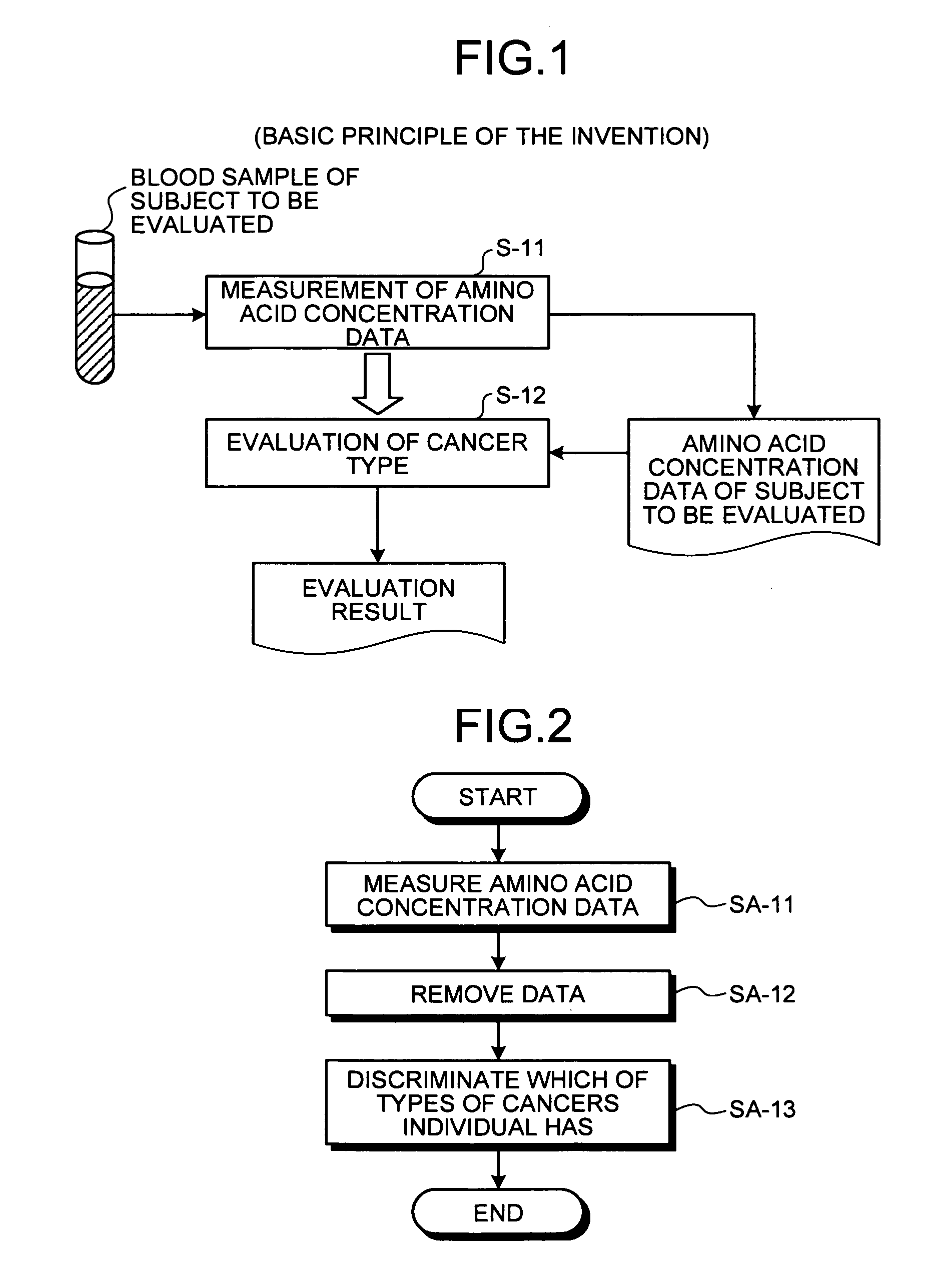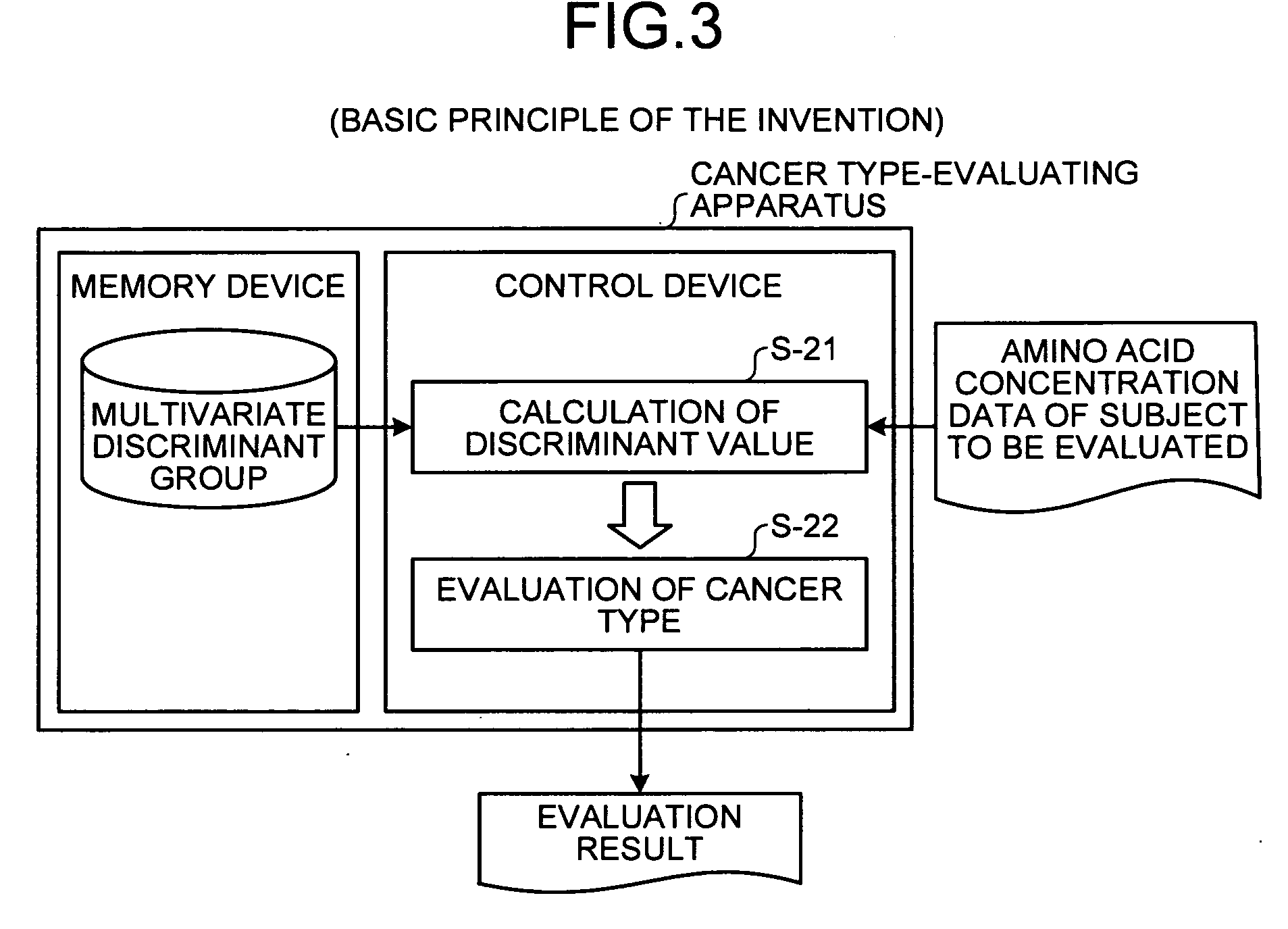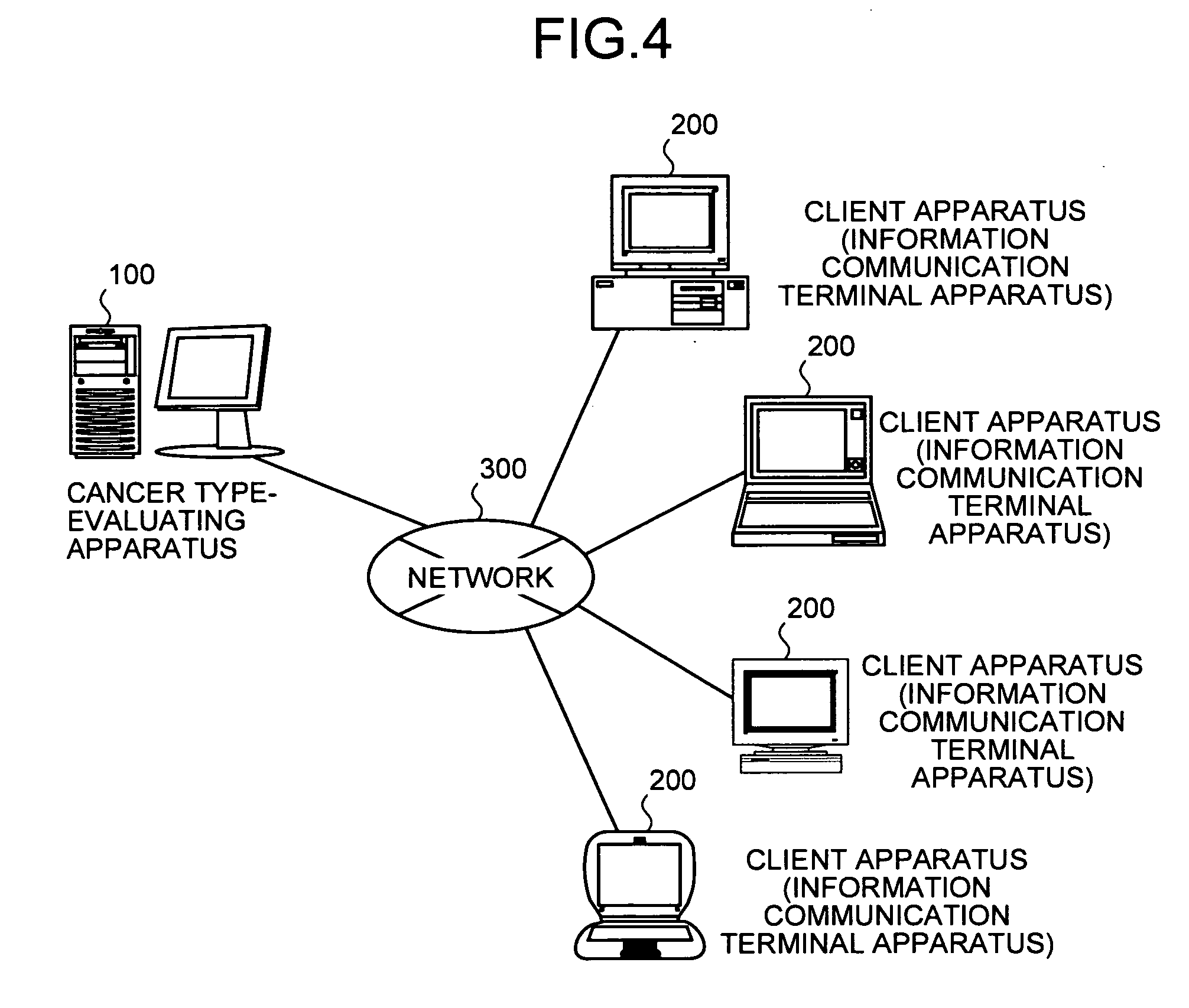Method of evaluating cancer type
a cancer type and cancer technology, applied in the field of cancer type evaluation, can solve the problems of reducing the detection specificity and detection sensitivity of ct (computer tomography), reducing the time, physical and financial burden of the examinee, and reducing the efficiency of examination
- Summary
- Abstract
- Description
- Claims
- Application Information
AI Technical Summary
Benefits of technology
Problems solved by technology
Method used
Image
Examples
first embodiment
1-1. Outline of the Invention
[0219]Here, an outline of the method of evaluating cancer type of the present invention will be described with reference to FIG. 1. FIG. 1 is a principle configurational diagram showing a basic principle of the present invention.
[0220]In the present invention, amino acid concentration data on a concentration value of an amino acid in blood collected from a subject (for example, an individual such as animal or human) to be evaluated is first measured (step S-11). Concentrations of amino acids in blood are analyzed in the following manner. A blood sample is collected in a heparin-treated tube, and then the blood plasma is separated by centrifugation of the collected blood sample. All blood plasma samples separated are frozen and stored at −70° C. before a measurement of amino acid concentrations. Before the measurement of amino acid concentrations, the blood plasma samples are deproteinized by adding sulfosalicylic acid to a concentration of 3%. An amino a...
second embodiment
2-1. Outline of the Invention
[0271]Herein, an outline of the cancer type-evaluating apparatus, the cancer type-evaluating method, the cancer type-evaluating system, the cancer type-evaluating program and the recording medium of the present invention are described in detail with reference to FIG. 3. FIG. 3 is a principle configurational diagram showing a basic principle of the present invention.
[0272]In the present invention, a discriminant value that is a value of a multivariate discriminant with a concentration of an amino acid as an explanatory variable is calculated in a control device for each of the multivariate discriminants composing a multivariate discriminant group, based on both (a) a concentration value of at least one of Glu, ABA, Val, Met, Pro, Phe, Thr, Ile, Leu, and His contained in previously obtained amino acid concentration data on the concentration value of the amino acid of a subject (for example, an individual such as animal or human) to be evaluated and (b) the...
example 1
[0436]Amino acid concentration in blood is measured by the amino acid analysis method in blood samples of various cancer patient groups with definitive diagnosis of cancer and blood samples of a cancer-free group. The unit of the amino acid concentration is nmol / ml. FIGS. 23 and 24 are boxplots showing the distribution of amino acid explanatory variables of various cancer patients and cancer-free subjects. FIG. 23 is the boxplots showing the distribution of the amino acid explanatory variables of male various cancer patients and male cancer-free subjects, and FIG. 24 is the boxplots showing the distribution of the amino acid explanatory variables of female various cancer patients and female cancer-free subjects. In FIGS. 23 and 24, the horizontal axis indicates the cancer-free group and the various cancer groups, and ABA in the figures represents α-ABA (α-aminobutyric acid). Further, for the purpose of discrimination among the various cancer groups and the cancer-free group, evaluat...
PUM
 Login to View More
Login to View More Abstract
Description
Claims
Application Information
 Login to View More
Login to View More - R&D
- Intellectual Property
- Life Sciences
- Materials
- Tech Scout
- Unparalleled Data Quality
- Higher Quality Content
- 60% Fewer Hallucinations
Browse by: Latest US Patents, China's latest patents, Technical Efficacy Thesaurus, Application Domain, Technology Topic, Popular Technical Reports.
© 2025 PatSnap. All rights reserved.Legal|Privacy policy|Modern Slavery Act Transparency Statement|Sitemap|About US| Contact US: help@patsnap.com



